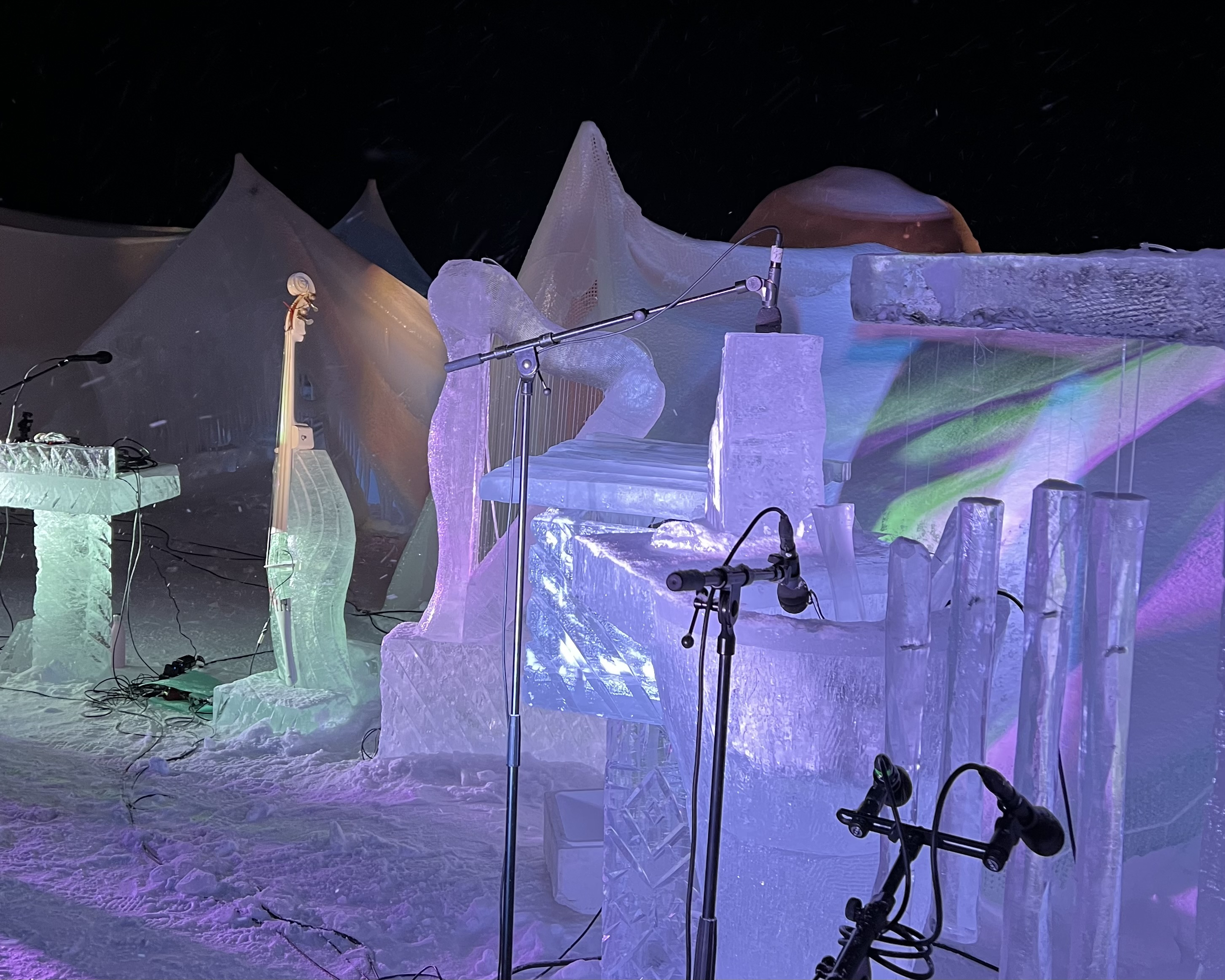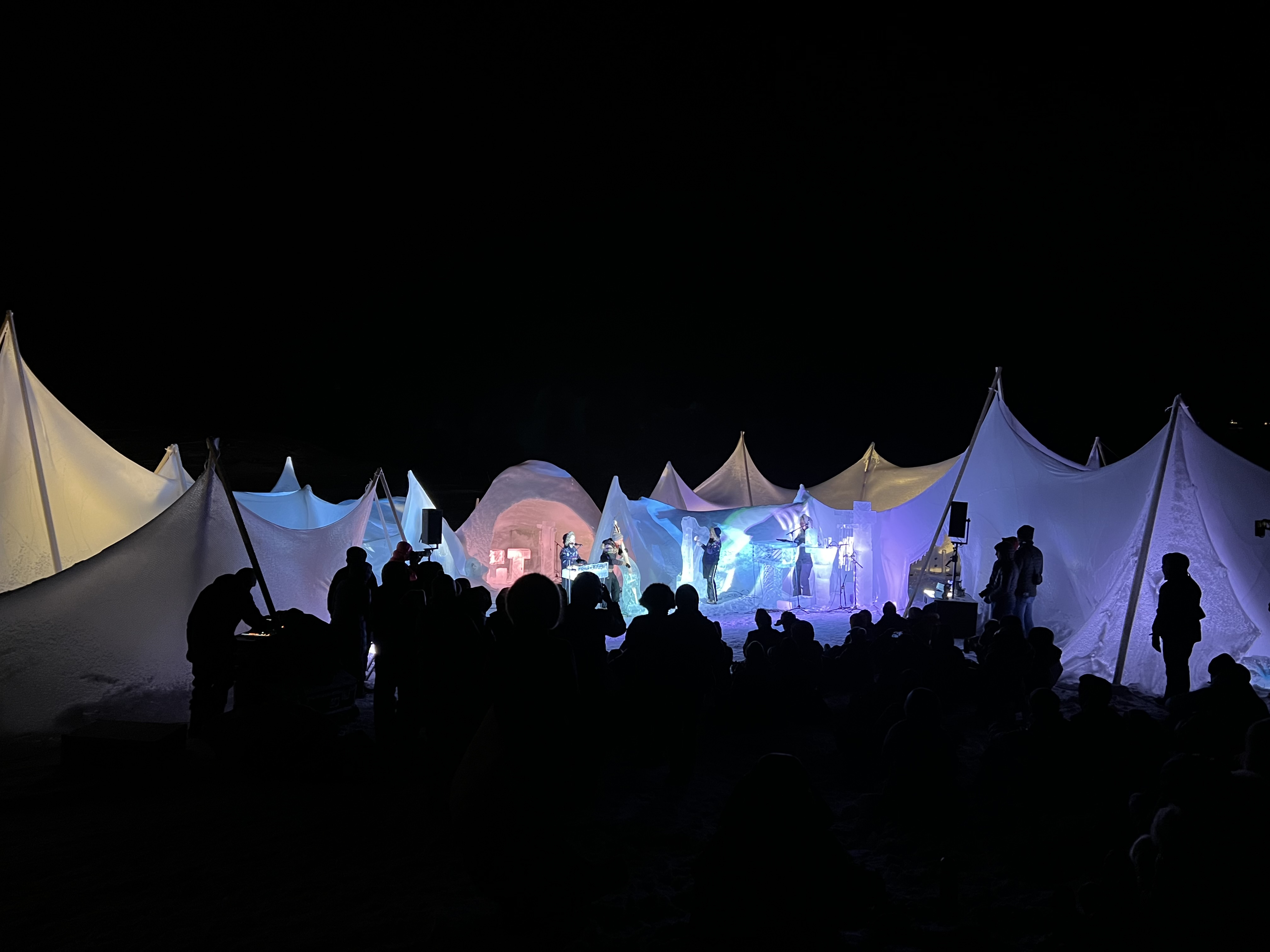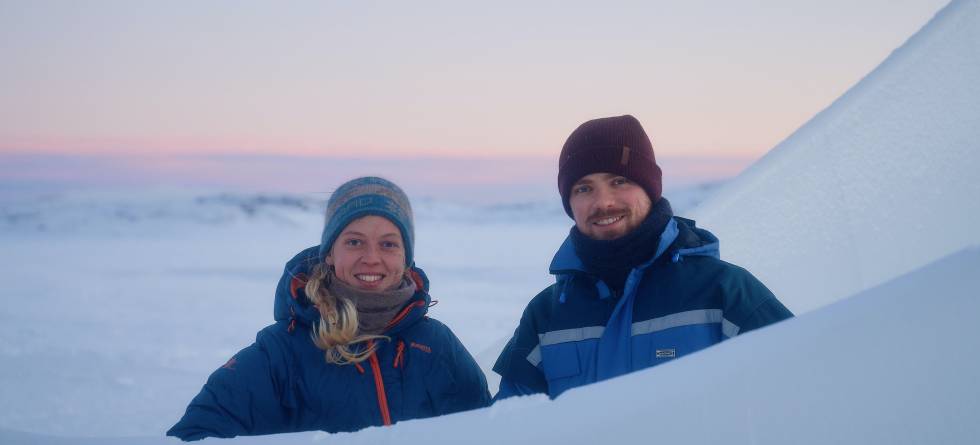Last weekend the 17th Ice Music Festival took place at the beautiful frozen lake of Bergsjø in Ål. The unique festival where venue, art and instruments are entirely made of ice, is initiated by musician Terje Isungset. Every year students from the Faculty of Fine Art, Music and Design (KMD) are designing and building the arena, which had room for a brand-new session this year: a Climate Park dedicated to polar research.
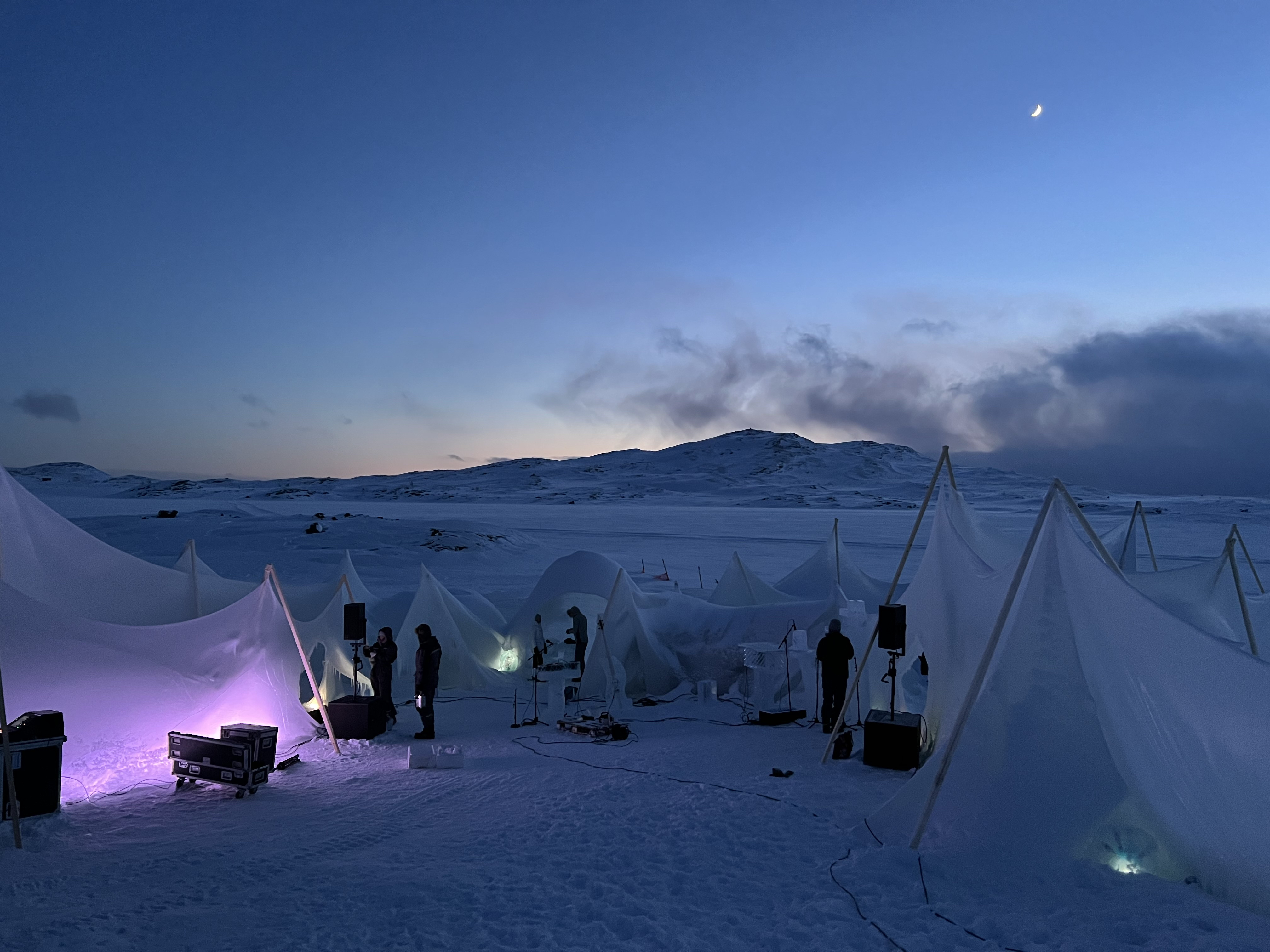
Polar science explained through experiments
Through various experiments PhD-candidates Sonja Wahl, Paul Halas and professor and researcher Lars H. Smedsrud at the University of Bergen and the Bjerknes Centre demonstrated Greenland ice sheet melt, climate reconstructions from ice core and differences in albedo reflectivity to the audience in scenic, icy surroundings.
– Although I am not incredibly trained to give these ad-hoc science talks, I think we successfully captured the audience’s attention by presenting some of the basics of polar science. It also seemed the guests appreciated the personal touch we added, Sonja Wahl says who is examining how snow captures the climate signal in the ERC-funded SNOWISO project.
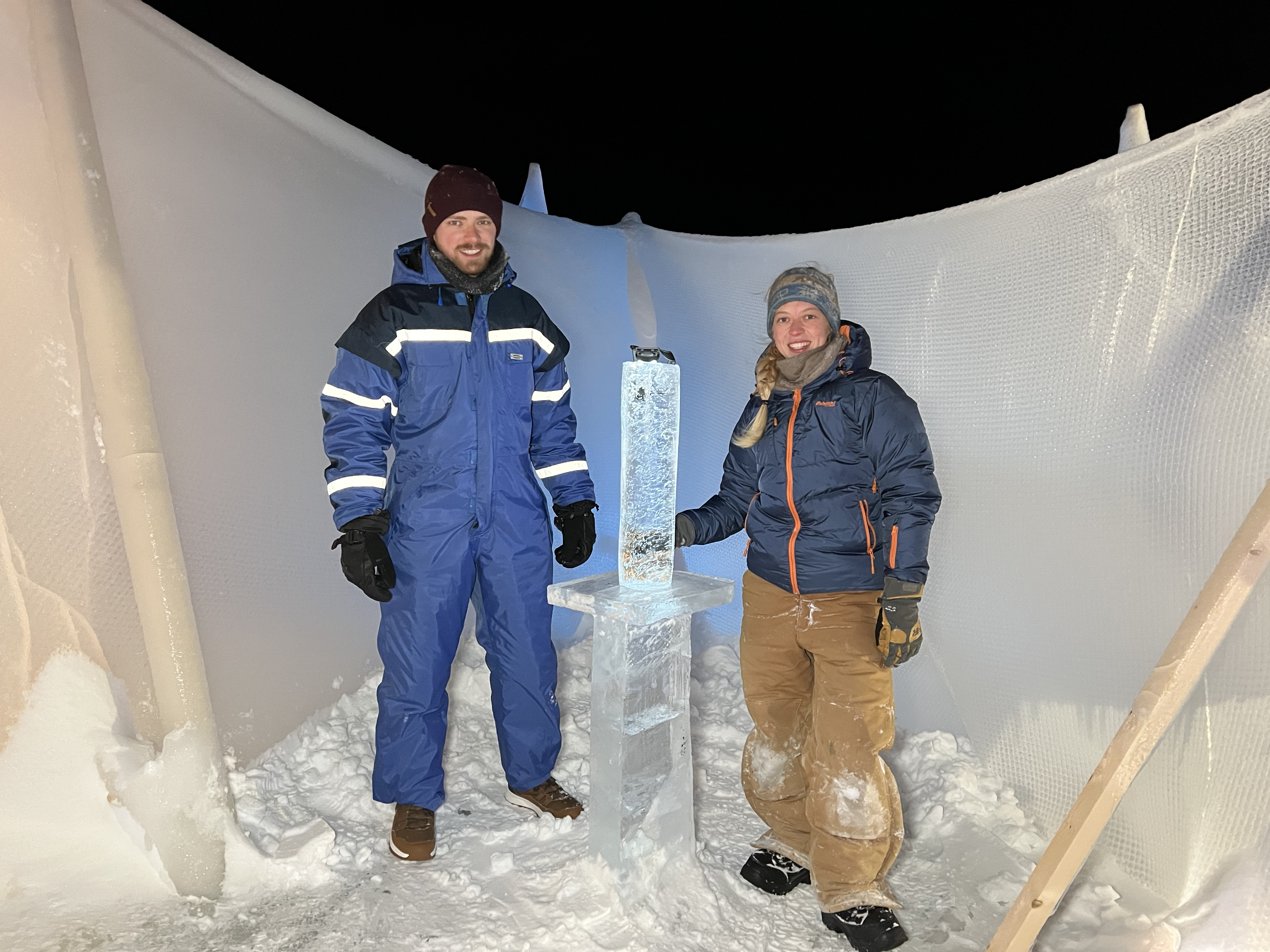
Low snow-depth brought challenges
To support their science talks, they used display material from ice and snow to explain polar research visually. However, prior to the event high temperatures and lack of snow led to some adjustments.
– The idea was to talk about snow densification and accumulation. This year the snowfall was exceptionally small - up to five days before the festival there had been no snow at all. We had to adjust our original plan and decided to focus on ice cores as climate archive and ice sheet melt along with sea level rise. Luckily the weather changed and brought some fresh snow just before the festival begun in order for us to reproduce a snow column on top of Greenland, Wahl explains.
The science part started briefly after the first concerts, where Wahl, Halas and Smedsrud were standing ready to engage with the guests.
– Then it was our turn, the scientists, to share a bit of our daily life. We also explained the circumstances around how the Greenland Ice Sheet is melting, Paul Halas says, who is currently studying impact of Greenland Ice Sheet surface melting on the velocity of glaciers.
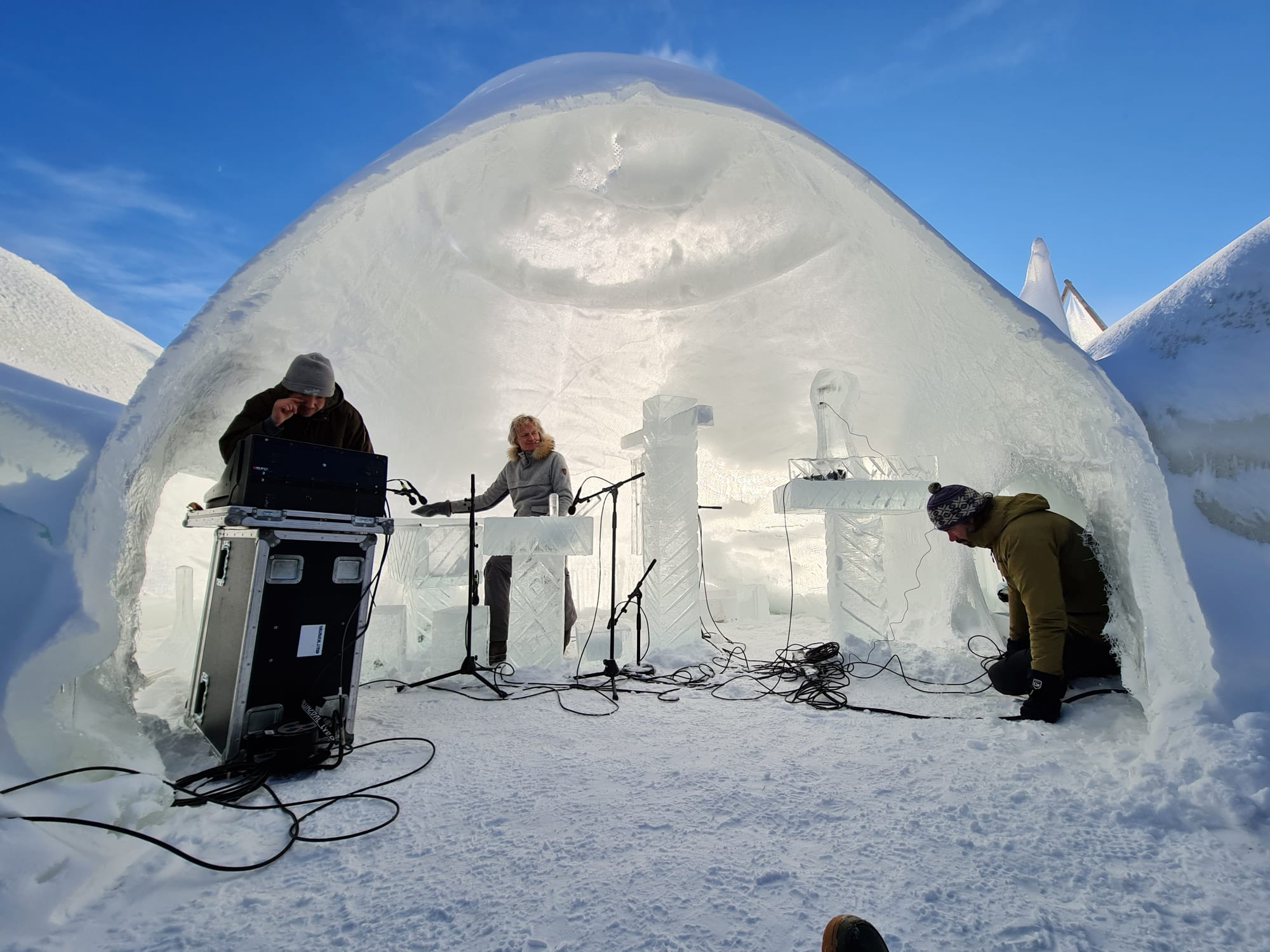
Climate-talk with improvised music
In addition to the Climate Park, researcher Lars H. Smedsrud and ice musician Terje Isungset, merged science and music smoothly into a climate lecture from stage: Smedsrud detailed his experiences researching climate change whilst Isungset improvised on his Iceofon.
– The ice music from Terje Isungset was wonderfully magical and really connected us all with the natural elements, and it was a joy to discuss science and climate change with him too. Even the snowstorm on Saturday night added a mystical and dramatic touch that I will remember a long time, Smedsrud says.
– Santa Claus might have bought an electric car
During the final day the family concert took place, where Smedsrud contributed with climate facts adapted to a younger audience.
– Complicated cause-and-effect about climate change is not easy to convey to children in primary school. Instead, we talked about winters getting shorter, and how we all think it’s sad. Terje then asked what Santa is doing now when he cannot use his sledge for Christmas. I suggested he might have bought an electric car, Smedsrud says amusingly.
He also detailed why Santa cannot have a house on the North Pole, as the sea ice is constantly moving southwards, and the house would melt out within a year.
Engaging with people outside their sphere
Being back in Bergen and continuing their daily life as scientists, they all agree on what a unique experience and opportunity it was participating at the festival.
– Having the chance to meet and work with other professionals outside our sphere, such as photojournalists, art students, musicologists, and creators of ice sculptures on a joint arena is a great way to exchange knowledge and expand outreach. Discussing with the public gives you hindsight and makes you remember why, as climate scientists, we are doing what we are doing, Halas says.
